Reviews
Elna Schdanoff & Christian Sundgren: Kirje Siperiasta [A letter from Siberia]
17 June 2009 | Mini reviews, Reviews
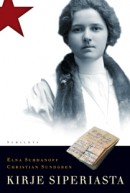 Kirje Siperiasta [A letter from Siberia]
Kirje Siperiasta [A letter from Siberia]
Finnish translation by Paula Autio
Helsinki: Schildts, 2008. 233 p., ill.
ISBN 978-951-50-1783-3
€ 29, hardback
Swedish original: Brevet från Sibirien
Esbo: Schildts, 1997. 233 p., ill.
ISBN 951-50-0865-4
€ 29, hardback
Kirje Siperiasta is based on letters and memoirs covering a period of more than 80 years by Elna Schdanoff (Russian spelling Zhdanova, 1885–1977). Born in St Petersburg, Elna belonged to a Finland-Swedish family of industrial entrepreneurs in Russia. Her father was director of a Belgian mining and steel company, and after the revolution of 1917, her Russian husband Vadya Zhdanov became the first engineer in the Soviet steel industry. In the whirlwinds of the Revolution the Zhdanovs decided to remain in the Soviet Union. Vadya Zhdanov was executed as a spy during the Stalinist purges of 1938; Elna was sentenced to tens years of forced labour and deportation. According to the book’s editor, Zhdanova’s nephew Christian Sundgren, his aunt’s memoirs were not published in Finland when she wrote them because of the self-censorship of the Finnish press. In addition to the account of her imprisonment, the book generates interest with descriptions of Russian industry before and after the revolution. In the 1950s Zhdanova’s brother finally managed to obtain permission for his sister to travel to Finland where she remained for the rest of her life.
Sealspotting
14 June 2009 | Reviews
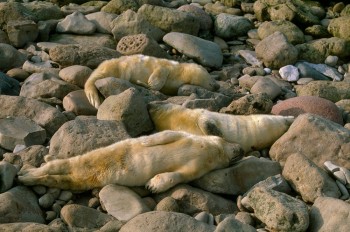
Zzzzzzz! In the grey seal kindergarten babies take a nap after dinner. – Photo: Seppo Keränen
Taskinen, Juha
Paluu Saimaalle
[Return to Lake Saimaa]
Helsinki: WSOY, 2009. 204 p., ill.
ISBN 978-951-0-33745-5
€ 38.90, hardback
Keränen, Seppo & Lappalainen, Markku
Hylkeet [The seals]
Helsinki: Maahenki, 2009. 151 p., ill.
ISBN 978-952-56-5266-6
€ 45, hardback
Sälar
Helsingfors: Söderströms, 2009.
151 p., ill.
Swedish translation: Annika Luther
ISBN 978-951-52-2603-7
€ 45, hardback
The private life of the species of seal that lives only in Lake Saimaa has been carefully investigated lately. Almost everything about this highly endangered species has been revealed, thanks to technological devices such as transmitters that can be glued to their backs…
STOP! WARNING: as I realise that not everybody wants to know what pinnipeds do in their spare time, I suggest you quit reading now, if you aren’t interested in the lives and fates of an obscure group of about 260 mammals that live in a lake in the remote west of Finland.
Leena Krohn: Valeikkuna [False window]
12 June 2009 | Mini reviews, Reviews
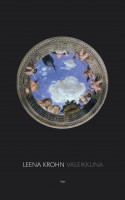 Valeikkuna
Valeikkuna
[False window]
Helsinki: Teos, 2009. 155 p.
ISBN 978-951-851-183-3
€ 21, hardback
The themes of the fiction of Leena Krohn (born 1947) have always included the distinction between life and art, the influence of the media and technology, and the dialogue between truth, illusion and falsehood. In Valeikkuna, her 28th book, the protagonist is a former student of philosophy who has installed a flotation tank in his home, where he spends most of his time, receiving customers to whom he gives advice. The philosopher ‘s teenage daughter lives in the mostly virtual but safe ‘Fake Fake Land’; their home town is ruled by the Dividers League, who use violence to establish their control. The impossibility of defining reality runs as a prominent theme throughout the novel. As is often the case in her novels, Krohn concentrates on the philosophical attitudes of her characters rather than on psychological depth; Valeikkuna is a wise and critical novel, although not perhaps among her best work. Krohn’s books have been translated into 15 languages; her novel Pereat Mundus (1998) is to be issued in English later this year by the San Francisco publisher Omnidawn.
Netta Böök & Juhani Seppovaara: Kirkosta savusaunaan [From churches to smoke saunas]
4 June 2009 | Mini reviews, Reviews
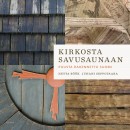 Kirkosta savusaunaan. Puusta rakennettu Suomi
Kirkosta savusaunaan. Puusta rakennettu Suomi
[From churches to smoke saunas. A Finland built of wood]
Helsinki: Otava, 2008. 175 p., ill.
ISBN 978-951-1-20337-7
€ 33, hardback
Photographer Juhani Seppovaara and architectural journalist Netta Böök have collected examples of timber construction: timber was traditionally used to build churches, cottages, villas, farmhouses, parsonages, saunas, manor houses and entire residential neighbourhoods. The authors even include dance pavilions – thousands of them were built around the country after the Second World War. As early as the end of the 18th century, doctors were recommending timber houses as healthy places to live in. However, wars and fires have destroyed many of Finland’s wooden buildings. The book also presents stories of those who lived in them and built them. The 1960s and 1970s in particular saw the demolition of valuable timber-constructed neighbourhoods, which were pulled down in order to make way for structures of a more modern kind. Today timber is once more an inspiration for builders and developers.
Ruma sota [The ugly war]
11 May 2009 | Mini reviews, Reviews
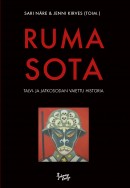 Ruma sota. Talvi- ja jatkosodan vaiettu historia
Ruma sota. Talvi- ja jatkosodan vaiettu historia
[The ugly war. The suppressed history of the Winter and Continuation Wars ]
Toim. [Ed. by] Näre, Sari & Kirves, Jenni
Helsinki: Johnny Kniga, 2008. 468 p., ill.
ISBN 978-951-0-32917-7
€ 39, hardback
The book is about the conflicts associated with the interpretation of the Finnish Winter and Continuation Wars (1939–1944) and the culture of silence which followed them. It argues that the psychological impact of those wars, which shifted from one generation to the next, caused suffering, and that those who had traumatic experiences were left largely alone with their distress. The articles examine children’s experiences of war, the experiences of cowards and deserters, the effects of war on sexual behaviour and drug use, and the impact of propaganda on people’s minds. There is a startling essay on violence at the front line based on the writings of veterans, with photographic archival material. The book also discusses the views of Finnish writers who served in the wars, and the violations of human rights encountered by prisoners of war.
Laulujoutsenen perintö [The whooper swan’s inheritance]
9 April 2009 | Mini reviews
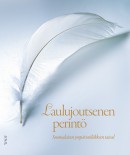 Laulujoutsenen perintö: ympäristöliikkeen taival
Laulujoutsenen perintö: ympäristöliikkeen taival
[The whooper swan’s inheritance: the journey of the environmental movement]
Editor-in-chief: Helena Telkänranta
Helsinki: Finnish Association for Nature Conservation and WSOY, 2008. 304 p., ill.
ISBN 978-951-0-32428-8
€ 42, hardback
The book presents the history of Finnish nature conservancy and the movement to promote it from the 18th century to the present day in essays by 43 authors. Although a number of prominent figures in Finnish society played an important role in the movement’s development, most of the actual work was done by dedicated nature-lovers. The conservationists of the early days hailed from the world of science, but since the 1970s the most active members of the movement have been environmental activists and government officials. The book discusses the different biotypes – forests, water habitat, swamps, Lapland habitat – and explores the country’s cultural landscapes and the relation of environmental protection to society. Many areas which are now considered important were rescued at the last moment. The book won Finland’s Nature Book of the Year Award for 2008.
Punamustavalkea – 1918 valokuvissa [Red, black and white: 1918 in photographs]
31 March 2009 | Mini reviews
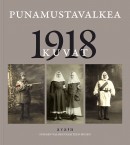 Punamustavalkea – 1918 valokuvissa
Punamustavalkea – 1918 valokuvissa
[Red, black and white – 1918 in photographs]
Toim. [Ed.by] Kukkonen, Jukka & Heikka, Elina
Helsinki: Valokuvataiteen museo /Avain, 2008. 167 p., ill.
ISBN 978-952-5524-65-9
€ 29, paperback
The book examines the Finnish Civil War and the photographic heritage of the year 1918 in articles which explore the background to the conflict. There are photographs of the ‘Red’ and ‘White’ guards, the events of the war, the prison of war camps, and the everyday lives of civilians. The publication presents the work of the photographers and film technicians who supported different sides in the conflict, and discusses the fate of the photographic archives after the war. A previously unknown collection of German propaganda pictures is also included. Archival research has demonstrated that there are more photographs from the period than was originally supposed; after the war they were confiscated and used to trace Red Guard soldiers who had gone missing. The book was published in connection with an exhibition at the Finnish Museum of Photography.
Henrika Tandefelt: Konsten att härska [The art of ruling]
27 March 2009 | Mini reviews
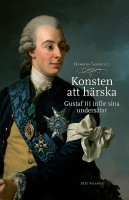 Konsten att härska. Gustaf III inför sina undersåtar
Konsten att härska. Gustaf III inför sina undersåtar
[The art of ruling. Gustav III in the presence of his subjects]
Helsingfors: Svenska litteratursällskapet i Finland / Stockholm: Atlantis, 2008. 439 p., ill.
ISBN 978-951-583-159-0
€ 35, hardback
The book, based on Henrika Tandefelt’s doctoral dissertation (2007), explores the meaning of kingship in Gustavian political culture. King Gustav III (1746–1792), who ruled over Sweden and its ‘Finnish territory’ with his machinery of government officials, devoted himself to phenomena which have received little attention from historians. Complicated rules of etiquette, ceremonies, tournaments, and various genres of art were the object of much study on the part of the king, who had both ethical and political aims in meddling in these. Tandefelt examines topics like royal favours – the granting of noble ranks, and medals and titles – and the rhetoric used by the king. The final part of the book looks at Gustav III’s actions against Russia during the 1788–1790 war.
Reima Luoto & al: Suomen sota 1808–1809 [The Finnish War of 1808–1809]
27 March 2009 | Mini reviews
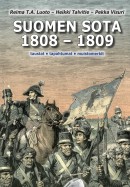 Luoto, Reima T.A. & Talvitie, Heikki & Visuri, Pekka:
Luoto, Reima T.A. & Talvitie, Heikki & Visuri, Pekka:
Suomen sota 1808–1809: taustat, tapahtumat, muistomerkit
[The Finnish War of 1808–1809: background, events, memorials]
Espoo: Fenix-Kustannus, 2008. 260 p., ill.
ISBN 978-951-862-183-9
€ 36, hardback
As a result of the 1808–1809 Russian-Swedish war, Finland, which had until then belonged to Sweden, was annexed to the Russian Empire, and Finland was established as an autonomous grand duchy. In this 200th anniversary year, several books about the war have already appeared. In its introduction, this book examines the birth and development of the idea of Finnish independence from the reign of Sweden’s King Gustav III onwards. Articles in the volume discuss the place of Finland and Sweden in Europe during the period of the Napoleonic war, and in an article which includes a survey of the present day, Finland’s OSCE envoy Ambassador Heikki Talvitie shows how Sweden has consistently adhered to the foreign policy it formed in the year 1812. Finally, there is a presentation of the real and fictional heroes of J.L. Runeberg’s Fänrik Ståls sägner (‘The Tales of Ensign Stål’, 1848–60), and a guide to the monuments in Finland and Sweden which commemorate the war.
Marjo T. Nieminen: Tiedon tyttäret [The daughters of knowledge]
20 March 2009 | Mini reviews
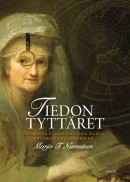 Tiedon tyttäret. Oppineita eurooppalaisia naisia antiikista valistukseen
Tiedon tyttäret. Oppineita eurooppalaisia naisia antiikista valistukseen
[The daughters of knowledge. Female European scholars from antiquity to the Enlightenment]
Helsinki: WSOY, 2008. 445 p., ill.
ISBN 978-951-0-31824-9
€ 52, hardback
This richly illustrated work, the winner of the 2008 Finlandia Prize for Non-Fiction, tells the story of female scholars representing 25 different fields of study. The book also contains shorter introductions on more than a hundred women who have influenced the development of science. Hypatia of Alexandria, the prominent mathematician and astronomer murdered in 415 A.D. because she was considered politically dangerous, is one of the most famous of them, while others have been forgotten: in the 1660s – at the age of only thirteen – the pioneering entomologist, naturalist and explorer Maria Sibylla Merian made findings which would have called into question the current teachings of natural history, had they entered into wider public knowledge. Marjo T. Nurminen (born 1967). is an archaeologist specialised in the philosophy of science, and she works as the science editor for the Finnish Broadcasting Company.
Maire Gullichsen: Regnbågsfärger, mörka stänk. Minnesvandringar 1907–1928 [Rainbow colours, dark shadows. Journeys in memory 1907–1928]
19 March 2009 | Mini reviews
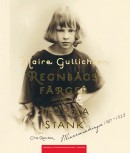 Maire Gullichsen: Regnbågsfärger, mörka stänk. Minnesvandringar 1907–1928
Maire Gullichsen: Regnbågsfärger, mörka stänk. Minnesvandringar 1907–1928
[Maire Gullichsen: Rainbow colours, dark shadows. Journeys in memory 1907–1928]
Red. [Ed. by] Cita Reuter
Helsingfors: Svenska Litteratursällskapet in Finland, 2008. 357 p., ill.
ISBN 978-951-583-165-1
€ 40, hardback
Maire Gullichsen, née Ahlström (1907–1990), an inheritor of the influential Ahlström timber, paper and metal company, was a prominent promoter of Finnish modern art, design and architecture and an art collector. In 1935, together with the architects Alvar and Aino Aalto and the journalist Nils-Gustav Hahl, she founded the design company Artek, which is still in business today. This book is based on her hitherto unpublished memoirs in which she recorded her life up to her marriage, to Harry Gullichsen, in 1928. Their home, Villa Mairea (1939) in the Ahlström family’s home district of Norrmark (Noormarkku) on Finland’s west coast, was designed by Alvar Aalto and remains one of the iconic examples of organic modernism. This richly illustrated volume gives a lively, detailed picture of a wealthy family during the tumultuous years of rapid industrialisation and struggle for independence in Finland. Maire Gullichsen’s daughter Professor Lilli Alanen and art historian Helen Woirhaye complement the author’s memoirs with articles providing information on the years after 1928.
Kimmo Nevalainen: Värttinä – mierontiellä ja punaisella matolla [Värttinä – from path of the outcast to red carpet]
16 March 2009 | Mini reviews
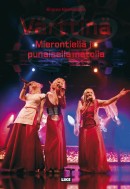 Värttinä – mierontiellä ja punaisella matolla
Värttinä – mierontiellä ja punaisella matolla
[Värttinä – from path of the outcast to red carpet]
Helsinki: Like, 2008. 255 p., ill.
ISBN 978-952-01-0139-8
€ 29, paperback
The Finnish folk band Värttinä (‘Spindle’) formed in the village of Rääkkylä, North Karelia, in 1983 during the rise in popularity of modern Finnish folk music. The band’s energy and virtuosic style of singing, together with their unique sound, quickly brought them to the public’s attention, and the band has also enjoyed success abroad. In 2003 Värttinä composed the score for a world-wide musical production of Lord of the Rings. The book (also to be published in an English edition) presents the group’s history, as well as its recordings. It discusses Finno-Ugric folk music and the ways in which Värttinä modifies and modernises it. Kimmo Nevalainen is the author of an earlier book about Värttinä called Korkealta ja kovaa (‘Singing out loud’, Like, 2001).
Kalevalan kulttuurihistoria [A cultural history of the Kalevala]
16 March 2009 | Mini reviews
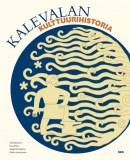 Kalevalan kulttuurihistoria
Kalevalan kulttuurihistoria
[A cultural history of the Kalevala]
Toim. [Ed. by] Piela, Ulla & Knuuttila, Seppo & Laaksonen, Pekka
Helsinki: Finnish Literature Society, 2008. 578 p., ill.
ISBN 978-952-222-007-3
€ 63, hardback
The social and cultural influences exerted by Finland’s national epic, the Kalevala (the versions compiled by Elias Lönnrot were published in 1835, 1849 and 1862), are considerable: a large number of Finnish institutions still use it in their operations and public image. This book, which had its origin in an initiative by the Kalevala Society, takes the reader through Lönnrot’s work as a collector of folk poetry and literary compiler. The authors also discuss the epic’s ideology and its impact on Finnish cultural history. The book has five parts which relate the Kalevala to the arts, with particular reference to the visual arts and music, nationhood, politics, the study of folk poetry, and the parallelism of repetition. There are subjects included which have not previously featured in academic research, such as interpretations of the Kalevala in popular culture.
Tuomas Hoppu: Tampereen naiskaarti. Myytit ja todellisuus [The Tampere Women’s Guard. Myth and reality]
16 March 2009 | Mini reviews
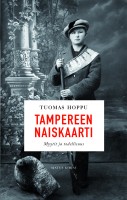 Tampereen naiskaarti. Myytit ja todellisuus.
Tampereen naiskaarti. Myytit ja todellisuus.
[The Tampere Women’s Guard. Myth and reality]
Helsinki: Ajatus Kirjat, 2008. 272 p., ill.
ISBN 978-951-20-7759-1
€ 34, hardback
Several thousand women took part in the battles of the 1918 Finnish Civil War, though not all were involved in the actual fighting. At full strength, the Tampere Women’s Guard numbered about 270 people, and it consisted primarily of industrial workers. Historian Dr Tuomas Hoppu has studied the fates of these women with the help of archival material and accounts by people who were alive at the time. Hoppu also describes the post-war period: the political trials of women, the conditions in the prison camps where the women were held, and the difficulties they encountered in returning to civilian life. According to Hoppu, the members of the women’s guard were genuine volunteers, while men were often forced to join the Reds under duress.

